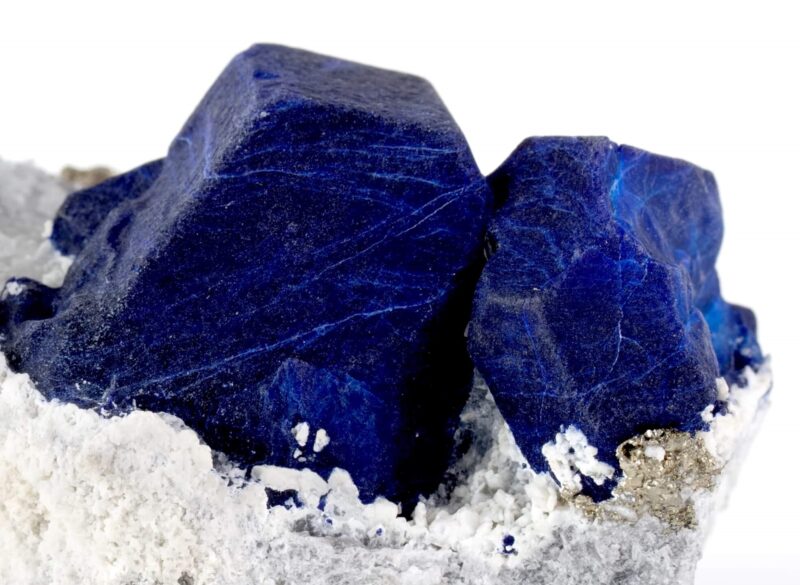Lapis lazuli, a metamorphic rock known for its deep blue hue, has captivated humanity for millennia. Revered for its rich color and historical significance, this stone has been used in jewelry, art, and spiritual practices across ancient civilizations like Egypt, China, and Mesopotamia.
Its symbolism of royalty, courage, truth, wisdom, and healing has made it a cherished gemstone through the ages. In this article, we look into the factors that determine the value of lapis lazuli, explore the sources and varieties of this stone, and provide essential tips for both buyers and sellers.
Key Takeaways
- Value Determinants: The value of lapis lazuli is primarily influenced by its color, clarity, cut, and carat weight, with the most valued stones exhibiting an even, deep blue color with minimal calcite and just the right amount of pyrite flecks.
- Source and Quality: Afghanistan’s Sar-e-Sang deposit is known for producing the finest quality lapis lazuli, prized for its intense blue color and minimal calcite presence, setting the standard for top-quality stones.
- Varieties and Composition: Lapis lazuli’s color and quality vary depending on its mineral composition, including lazurite, haüyne, sodalite, and nosean, with the ideal specimens featuring a rich blue hue with little to no calcite and a sprinkle of pyrite.
- Buying and Selling Tips: For both buyers and sellers, understanding the gemstone’s unique features, including its provenance and quality, is crucial. Authenticity can be verified through tests for hardness, specific gravity, and fluorescence to distinguish genuine lapis lazuli from imitations.
- Historical and Spiritual Significance: Beyond its physical attributes, lapis lazuli’s value is also rooted in its historical and spiritual significance, cherished for millennia across various cultures for its symbolism of royalty, wisdom, and healing.
What Factors Affect the Value?
The value of lapis lazuli is influenced by several key factors: color, clarity, cut, and carat weight. The most prized specimens boast an even, intense blue color with subtle undertones of blue, green, or purple and are sprinkled with small flecks of golden pyrite.
However, the presence of white calcite veins, an excess of pyrite, or any visible cracks can significantly diminish the stone’s worth.
Color
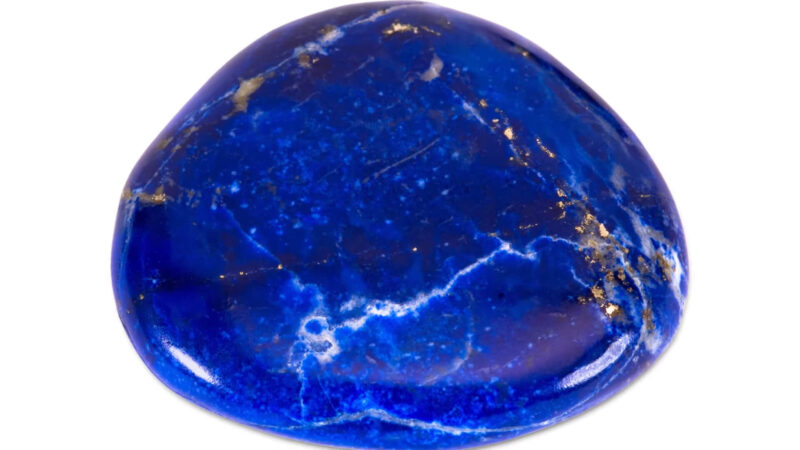
Color is the most critical factor affecting lapis lazuli’s value. The most sought-after stones are those with an intense, rich, and even deep blue color, sometimes with a slight violet hue, without patches of lighter shades or discoloration.
The presence of gold-colored pyrite flecks does not necessarily lower the value if they are small and evenly sprinkled, giving the stone a starry appearance. Stones are graded by color quality, with prices ranging from as low as $0.5 per carat for light blue variants to $30–$150 per carat for deep blue ones.
Clarity
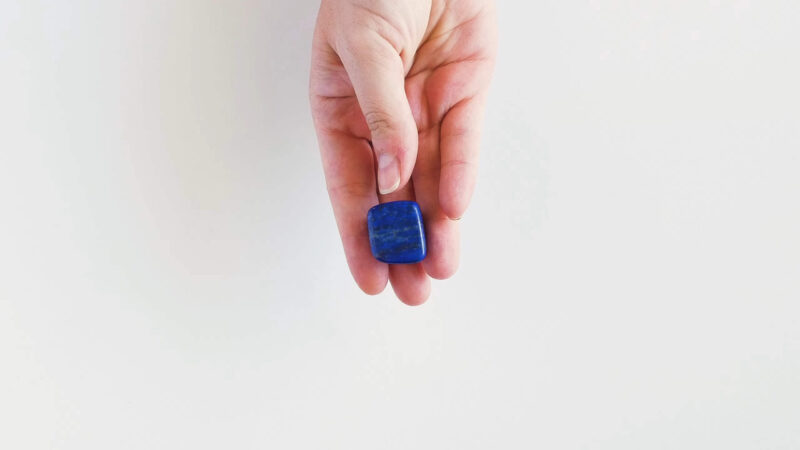
Clarity refers to the presence of pyrite and calcite. While pyrite can enhance the stone’s appearance if evenly distributed, excess pyrite or clumps can reduce its value.
White calcite streaks are generally undesirable, as they can make the stone appear less intense. The most valuable lapis lazuli has no visible white calcite matrix, and while pyrite inclusions can be attractive, they are less desirable in high-end jewelry.
Cut and Craftsmanship
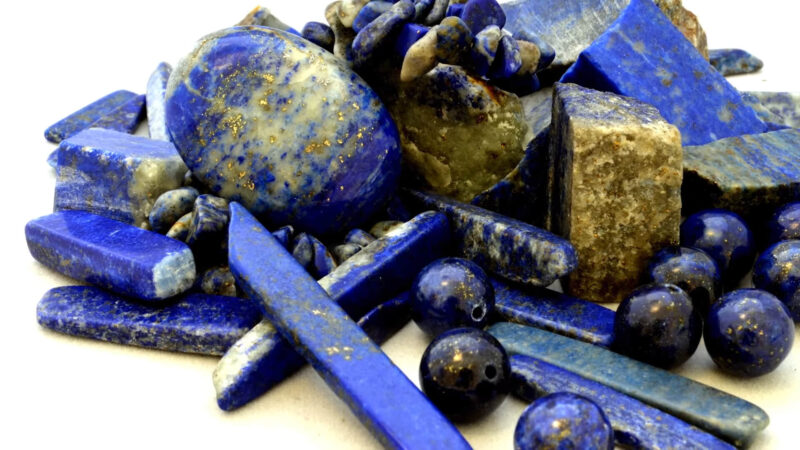
Cut and craftsmanship significantly influence the stone’s appeal and value. Lapis lazuli can be fashioned into cabochons, beads, inlays, and tablets, as well as practical objects like game boards and amulets.
High-quality lapis should exhibit a perfect finish with a mirror polish.
Origin and Rarity
Origin also plays a role in valuation. The finest quality lapis lazuli typically comes from Afghanistan, known for its rich color and minimal calcite. The rarity and difficulty of mining in remote regions contribute to the stone’s cost.
Treatment and Enhancement
Treatment and enhancement can affect the stone’s naturalness and price. Untreated, natural stones with deep blue colors are more valuable compared to dyed or treated stones, which are generally less expensive.
Carat Weight
As with many gems, larger pieces of high-quality lapis lazuli are rare and thus can command higher prices, particularly for stones that maintain consistent quality in color and clarity.
Additional Considerations
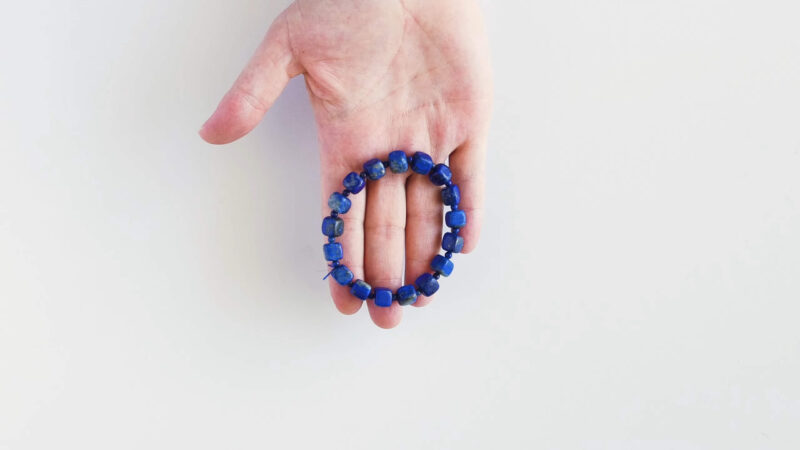
Additionally, the market recognizes specific trade names based on color and quality, including Afghan (Persian), Russian (Siberian), and Chilean lapis lazuli, each with distinct characteristics and value implications. Jewelry trends and the potential for synthetic or imitation lapis lazuli also play roles in the market.
Synthetic versions are available, and certain gemstones, like sodalite, can serve as convincing simulants. For more detailed pricing and valuation based on different units (gram, carat, etc.), common-quality lapis lazuli can cost between $5-15 per gram, while gem-quality material can reach up to $100-150 per carat.
In essence, when evaluating lapis lazuli, consider its color, clarity, cut, origin, and whether it has been treated or enhanced, as these factors significantly influence its value and appeal.
Are There Varieties?
Lapis lazuli belongs to the Sodalite mineral class and forms under specific conditions of heat and pressure. It is primarily sourced from regions such as Chile, Siberia, Myanmar, and Afghanistan, with each location offering stones of varying quality.
The Sar-e-Sang Deposit
Afghanistan’s Sar-e-Sang deposit is renowned for producing the finest lapis lazuli. This region has been a significant source of the stone for over 6,000 years, contributing to the gem’s historical and cultural importance.
Varieties and Composition
Besides lazurite, the primary mineral in lapis lazuli, the stone may contain haüyne, sodalite, and nosean, affecting its color and overall appearance. The name “lapis lazuli” itself, meaning “stone of blue” in Latin and Persian, hints at the stone’s revered status across cultures.
What Are the Tips for Buying and Selling?
To buy or sell lapis lazuli, one needs to appreciate the unique features of this blue stone. Buyers should look for pieces that have a rich color, a clear surface, and a high-quality cut.
Sellers should boost their appeal by sharing the provenance, the enhancement methods, and the quality certificates of their lapis lazuli.
Spotting Synthetics and Imitations
In a market where synthetics and imitations are not uncommon, the ability to verify the authenticity of lapis lazuli is invaluable. Tests for hardness, specific gravity, and fluorescence can help distinguish genuine lapis from their look-alikes, ensuring that both buyers and sellers can trade with confidence.
Historical and Spiritual Significance
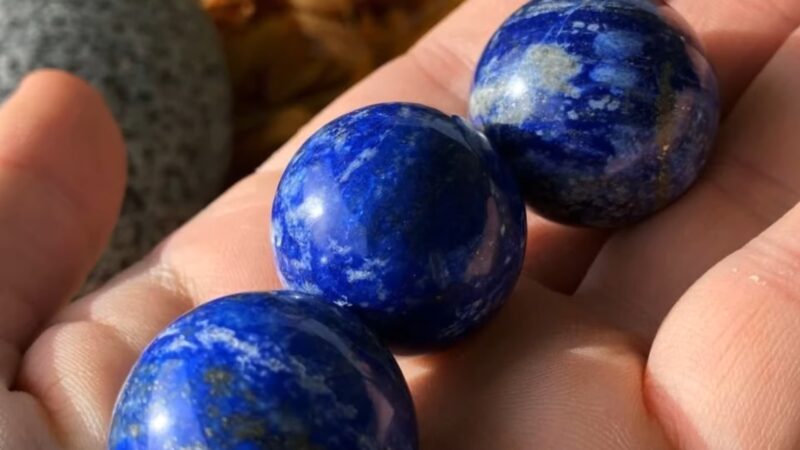
The intangible value of lapis lazuli—its historical significance and spiritual symbolism—cannot be overlooked. For many, these aspects are as compelling as the stone’s physical beauty, adding depth and meaning to their acquisition.
FAQ
Are there any negative impacts associated with the use of lapis lazuli in historical or modern contexts?
While lapis lazuli is celebrated for its beauty and historical significance, there have been negative impacts associated with its extraction and use, particularly in historical contexts. The mining of lapis lazuli, especially in ancient times and in some modern scenarios, has often been labor-intensive and done under hazardous conditions, posing risks to the health and safety of workers.
Final Words
Lapis lazuli’s beauty, rarity, and historical significance make it a valuable gemstone for collectors, jewelers, and enthusiasts alike. By understanding the factors that affect its value, recognizing the sources and varieties, and following expert buying and selling tips, individuals can make informed decisions about this ancient and majestic stone.
For further exploration into the world of gemstones, consider researching reputable sources and engaging with gemological studies to deepen your knowledge and appreciation of lapis lazuli and other precious stones.
